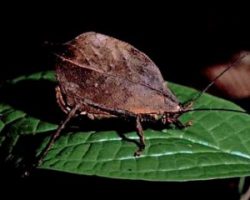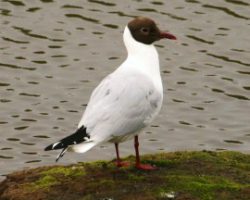Published Articles

Criminal Genes: Guilty as Charged?
Swedish scientists claim that some people may be born with genes that make them extremely cruel. According to the new study, the extremely aggressive behavior of criminals is determined by genetics. Genetic influence on criminal behavior Serial killers and other criminals who have repeatedly committed serious crimes (robbery, grievous bodily harm) may have been “programmed” to cripple others. A study published in the scientific journal “Molecular Psychiatry” sheds light on why most of the violent crimes are usually committed by the same person (“maniac”, “serial killer”) or a very small group of offenders, and most often men.

Sacculina Parasite
Sacculina is a parasitic arthropod from a crustacean subtype. The process of its development can serve as an excellent plot for a horror movie. “Alien” in the animal world The larva of the female parasite (which looks so innocent), travels for some time in the water column in search of suitable “prey” (nauplius stage). After 4-5 days, a small chitinous shell begins to appear in it (cypris stage). From this point on, sacculina has only one goal – to find a suitable crab as soon as possible, to gain a foothold on it and develop further.

Twitter: a guide for the sceptical scientist
Following her article in the latest Biologist, Rebecca Nesbit gives a Twitter introduction for scientists and shares some of her favourite hashtags. Twitter can be a daunting place for a new user, and my advice spiel which starts with hashtags and @ mentions can be rather a turn off. So before I get going on the details, I will give my number one tip: start by listening. If you set up an account and read what people are saying you will quickly get an idea of what might work for you. Some people will only ever listen, particularly if their reason for being on Twitter is to find useful links and hear what people are discussing. The next step for many people is to get tweeting (absolutely not twittering). This can allow you to network with scientists, spread the word about your work or blog, or…
Gulls acting strangely on flying ant day?
Gulls and other birds are often seen behaving strangely during flying ant season. Rebecca Nesbit (co-ordinator of the flying ant survey) discusses whether this could have anything to do with formic acid. Following the latest article in the Telegraph on gulls getting drunk on flying ants, it seemed time to share some of my research which never made it into the article. There are many reasons why gulls behaviour can be noticeable and, as I explained last year, they range from formic acid to botulism. There seem to be conflicting reports of gulls being ‘dozy’ and gulls being ‘boisterous’, which is a flaw in the drunk analogy: alcohol can induce both these behaviours in people, but it’s very unlikely that formic acid would be inducing both in gulls. There are lots of possible explanations for both behaviours. Boisterous is a common mind-set for gulls, and the feast that flying ant…
How do we value our natural capital?
Daija Angeli, project officer for the Society of Biology’s special interest group the Natural Capital Initiative, attended a meeting of the Parliamentary and Scientific Committee on the valuation of natural capital on 25th February 2014. Here is what she learned: How do we value our nature? The concept of natural capital is often used to describe the economic value of nature, and has been explored as a way to ensure that nature is protected and to assign priorities. This was the focus of discussion at a recent meeting of the Parliamentary and Scientific Committee, which tackles issues where science and politics meet. Three talks by experts on natural capital spoke about recent research and policy developments before chair Andrew Miller MP opened the debate to the audience. Environmental economist Julian Harlow (Defra) pondered not how, but why we value natural capital. We have failed to protect the environment based on…
What Twitter can bring to science writing
Rebecca Nesbit, press officer at the Society of Biology, is running evening courses on writing for a non-technical audience along with The Biologist’s managing editor Tom Ireland. Last year we ran our first course on writing for a non-technical audience, and I was struck by the diversity of people who attended. We had representatives from academia, from conservation charities and from industry. Their reasons for coming were equally diverse – to help attract donations, to explore alternative careers, to help raise the profile of their business… There are many situations where scientists write for non-specialist audiences – in magazines, on websites, as lay summaries of academic papers – but social media is particularly popular. There has been lots of discussion recently about how and why scientists should write for social media channels, and with our next courses coming up in February it seemed like the time to take a look…
GM: is opinion more important than science?
by Rebecca Nesbit, Society of Biology Today’s announcement by Environment Secretary Owen Paterson that the British public should be persuaded of the benefits of genetically modified has predictably caused controversy. The top message from anti-GM campaigners seems to be ‘you’re wrong about GM – the public don’t want it’. GM Freeze, quoted in the Telegraph, says: “The message is clear: the public do not want GM.” While there is no doubt some truth in this, the fact that ‘the public’ have reservations about GM has no bearing on whether GM is safe and effective; public opinion is not evidence for risks from GM. But could ‘people don’t want GM’ be a valuable argument for the Government ignoring scientific evidence about potential benefits? I found a prime example of the conflict between science and public opinion in this article on GM from the Daily Mail. The piece is scientifically flawed, most notably…

Would you be fooled by a fly? Play a game to find out!
Christopher Taylor, a PhD student at the University of Nottingham, invites you to play an insect game to assist with his research. In the natural world, not everything is what it seems. Deception is rife, and it can be hard to know whether to trust your senses. What first looks like a dead leaf might turn out to be a katydid. Or a tasty-looking worm might actually be an angler fish’s lure. Telling the difference between a fake and the real thing can be a matter of life or death. One type of deception is known as Batesian mimicry, whereby a harmless animal – the mimic – resembles a more dangerous one – the model – so that a predator will leave it well alone. Examples are treehoppers that look like ants, moths that look like hornets, and even caterpillars that look like snakes. It is easy to see how natural selection…
Chewing off her wings – the queen ant’s rite of passage
By Rebecca Nesbit from the Society of Biology There has been a long, slow build up to flying ant day this year. The first sightings of winged black garden ants came early, with hundreds of records for the flying ant survey already in by the third week of July. The first major flying ant day, however, was Friday 26th July, though even this turned out to be a prelude to the mass emergence on Thursday 1st August. For me, this protracted spell of flying ant sightings has been an opportunity to witness some fascinating behaviour as part of one of the summer’s greatest spectacles. On 26th July, I was excited to find some flying ants on the outside of the Society of Biology office. The tiny males were in search of fat new queens to mate with – I even saw two males trying simultaneously to mate with one queen. The next stage of…

Can gulls get drunk on ants?
Rebecca Nesbit from the Society of Biology has been working on the flying ant survey On Friday I received a phone call asking ‘are seagulls in Devon acting weirdly because of flying ants?’. The answer was very likely yes – flying ant day is a special day for gulls, and for many people the excited squawking of feasting gulls is the first sign of flying ant day. The next question, however, was ‘could seagulls be made delirious by formic acid from the ants?’. Gulls have apparently been hit by cars because they are ‘stupefied’ and wandering onto roads. The popular press are answering this second question in increasingly dramatic ways: gulls are made ‘yobbish’ by ants apparently! But the real answer has to be the scientist’s favourite of ‘maybe’. I haven’t found any studies confirming that formic acid is causing the gulls’ behaviour, but we do know that Lasius niger (the black…
